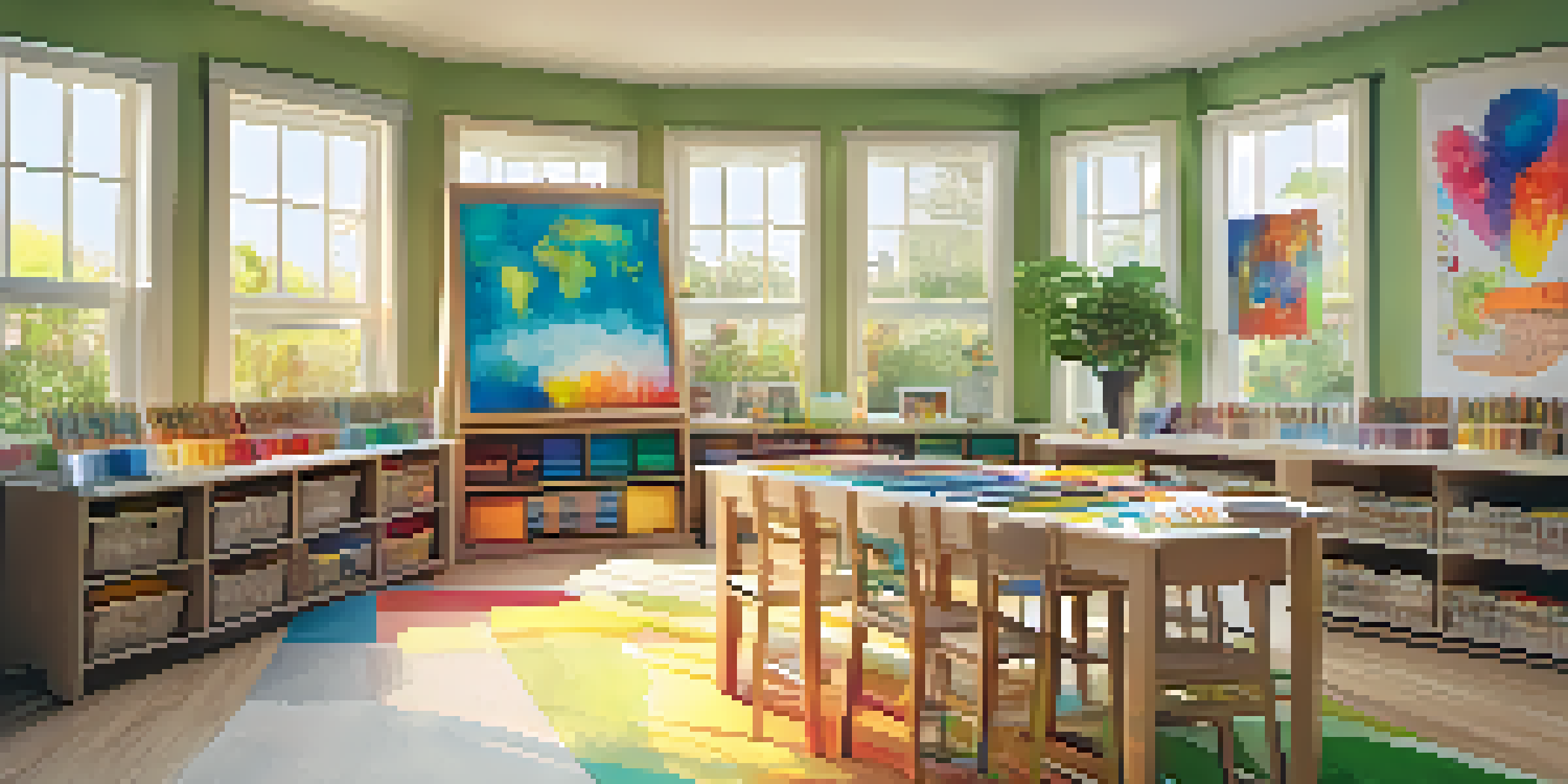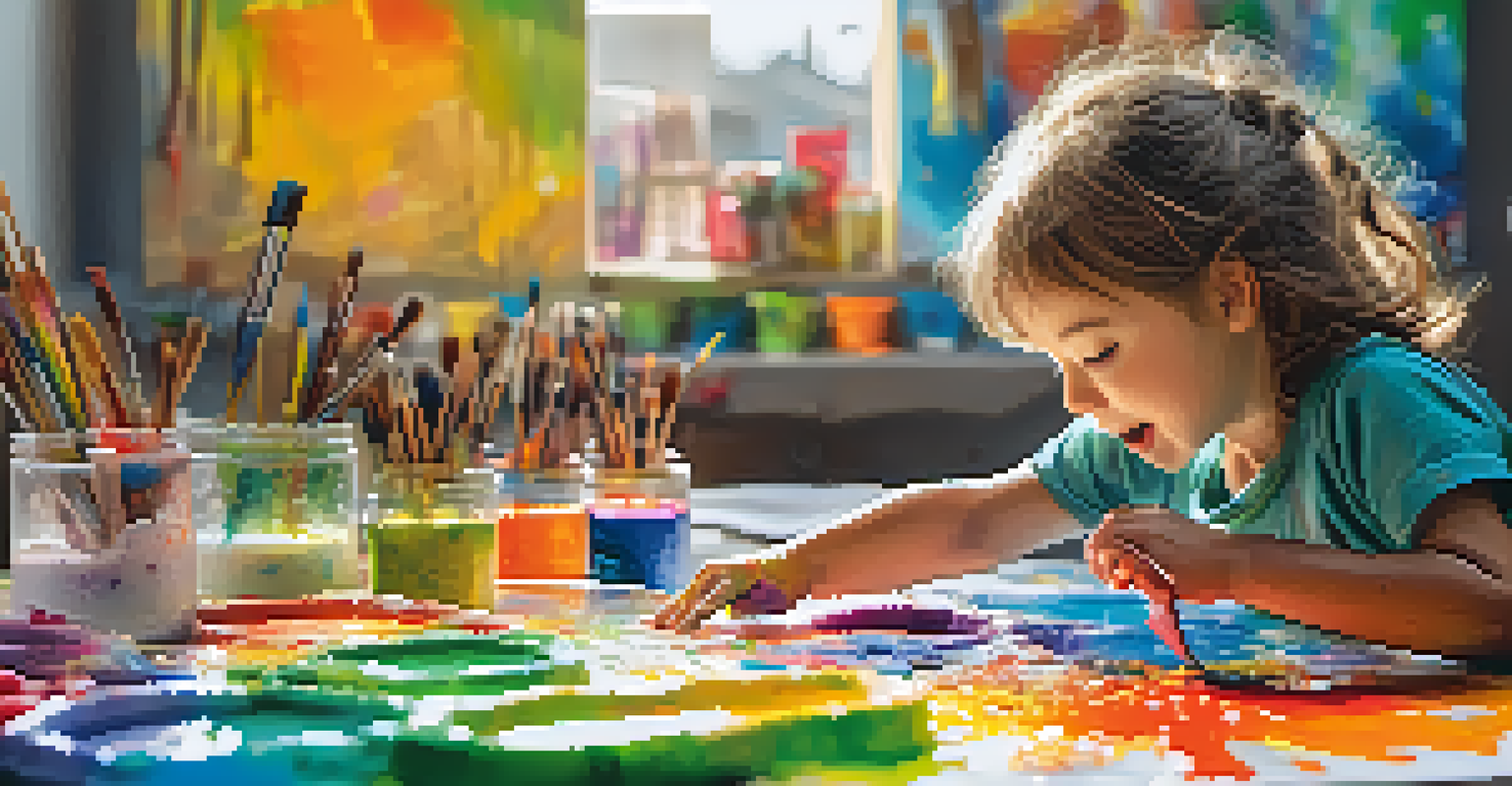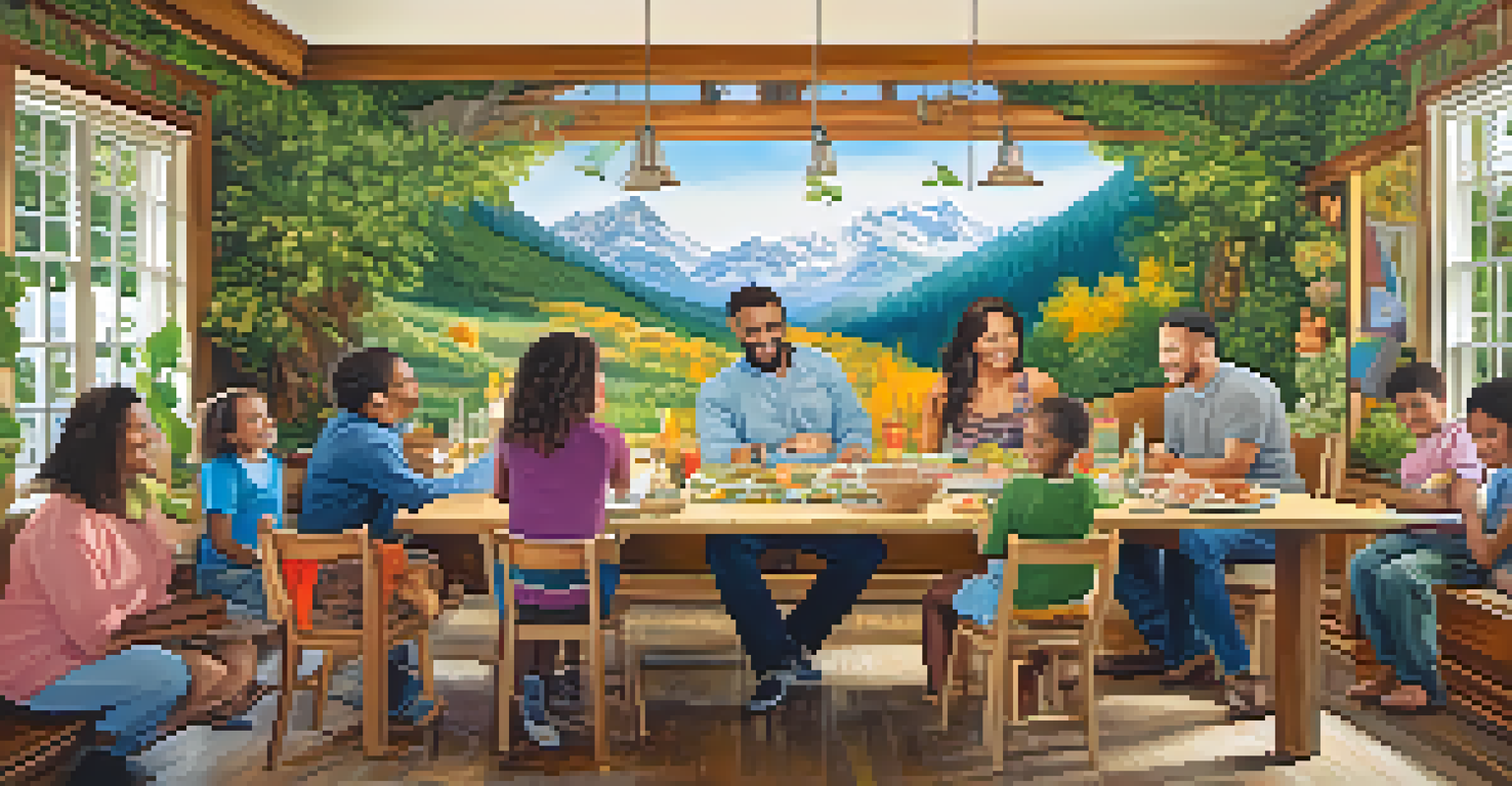Painting for Children: Art Therapy Techniques for Young Minds

Understanding Art Therapy for Children
Art therapy is a creative approach that uses artistic expression to help children communicate their feelings. Unlike traditional therapy, it allows kids to express themselves in a more playful and less intimidating way. This method is especially beneficial for children who may struggle with verbal communication.
Every child is an artist. The problem is how to remain an artist once we grow up.
By engaging in art, children can explore their emotions, process experiences, and even cope with trauma. Think of it as a safe space where they can let their imaginations run wild while working through complex feelings. This can lead to improved emotional regulation and self-awareness.
Art therapy isn't about creating a perfect masterpiece; it's about the process of creation. The act of painting, drawing, or crafting provides an outlet for self-expression that can be incredibly soothing and therapeutic for young minds.
Benefits of Painting for Emotional Expression
Painting can be a powerful tool for emotional expression, allowing children to convey feelings they might not understand or know how to articulate. For example, a child might express anger through bold, aggressive brush strokes, while softer colors could depict calmness or happiness. This process helps them to identify and understand their emotions better.

Moreover, painting can foster a sense of accomplishment. Completing a piece of art gives children a tangible result to be proud of, boosting their self-esteem. This positive reinforcement encourages them to explore their emotions more deeply and express themselves creatively.
Art Therapy Enhances Emotional Expression
Art therapy provides children with a creative outlet to communicate and process their feelings in a non-threatening way.
Additionally, art can serve as a conversation starter between children and adults. When a child shows their artwork, they often share what it means to them, opening up pathways for communication and emotional connection.
Creating a Safe Art Space for Kids
To maximize the benefits of art therapy, it’s essential to create a safe and welcoming space for children to express themselves. This space should be free of distractions and equipped with various art supplies like paints, crayons, and paper. By providing a comfortable environment, children can feel free to explore without fear of judgment.
Art enables us to find ourselves and lose ourselves at the same time.
Consider using natural light and vibrant colors in the art space to inspire creativity. Adding personal touches, such as the child's artwork or favorite colors, can make the area feel even more inviting. The goal is to foster a sense of belonging and safety.
Encourage children to make this space their own by allowing them to choose materials and decide how they want to create. This autonomy can significantly enhance their engagement and willingness to participate in the therapeutic process.
Simple Art Techniques for Young Minds
There are several simple art techniques that can be particularly effective for children. One popular method is finger painting, which allows kids to connect with their art on a tactile level. It’s messy, but that’s part of the fun and freedom to let go of inhibitions.
Another technique is collage-making, where children can cut out pictures from magazines or use various materials to create a story or scene. This method encourages creativity and can help children express complex emotions through the imagery they choose.
Creating Safe Spaces for Creativity
Establishing a welcoming art space encourages children to explore their emotions freely without fear of judgment.
Lastly, guided drawing or painting sessions can provide structure while still allowing for personal expression. For instance, prompting a child to draw their family or their favorite day can help them articulate their feelings in a safe and supportive way.
Incorporating Mindfulness in Art Activities
Mindfulness is an essential component of art therapy, helping children to stay present and focused during the creative process. Activities like breathing exercises before painting can help calm their minds and prepare them for expression. This practice teaches children to center themselves and engage fully with their emotions.
Art can also be a meditative practice. Encouraging children to reflect on their feelings as they create can enhance their self-awareness and emotional processing. For instance, asking them to think about a happy memory while painting can guide their emotions into a positive space.
By integrating mindfulness into art activities, children can learn valuable skills that extend beyond the canvas. These techniques can help them manage stress and anxiety in other areas of their lives, making art a powerful tool for emotional well-being.
Encouraging Family Involvement in Art Therapy
Family involvement can significantly enrich a child's art therapy experience. Parents and caregivers can join in on painting sessions, creating a bonding experience that fosters open communication. Sharing this creative time can help family members understand the child’s emotional world better.
When families engage in art together, it creates a safe space for conversations about feelings and experiences. For example, creating a family mural can prompt discussions about family dynamics, shared memories, and individual perspectives. This collaborative effort can strengthen family bonds.
Mindfulness in Art Promotes Well-Being
Incorporating mindfulness techniques into art activities helps children manage stress and enhances their emotional awareness.
Additionally, encouraging families to display the child's artwork at home can boost the child's confidence. It sends a message that their feelings and expressions are valued, further promoting their emotional growth.
Finding Resources and Support for Art Therapy
For parents interested in art therapy for their children, numerous resources are available. Websites, books, and local art therapy centers can provide valuable information and guidance. Connecting with a certified art therapist can also offer tailored strategies to suit a child’s specific needs.
Online platforms offer a plethora of ideas for art projects and therapy techniques that families can try at home. Joining support groups or online communities can also provide encouragement and shared experiences from other parents navigating similar journeys.

Furthermore, local community centers often host art classes or workshops that can introduce children to art in a fun and supportive environment. These opportunities can empower children to express themselves while also building social skills.